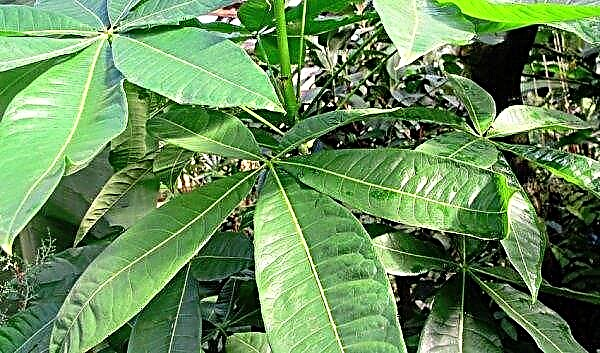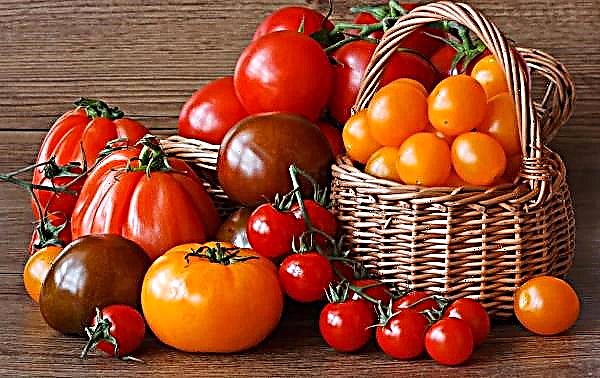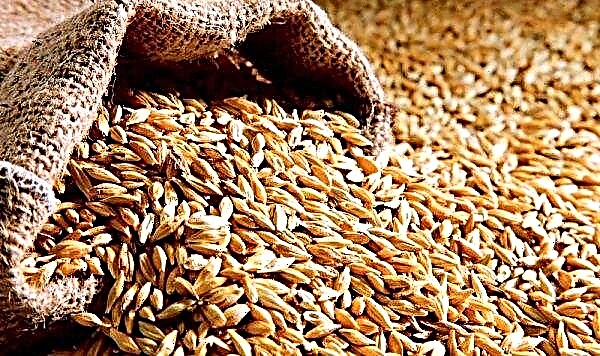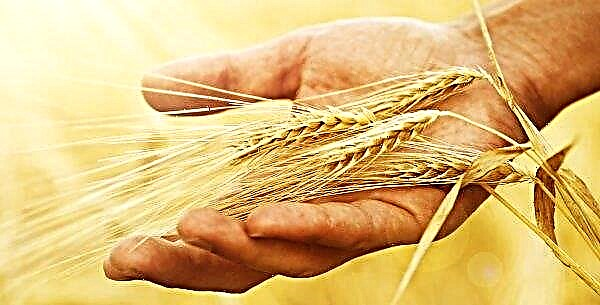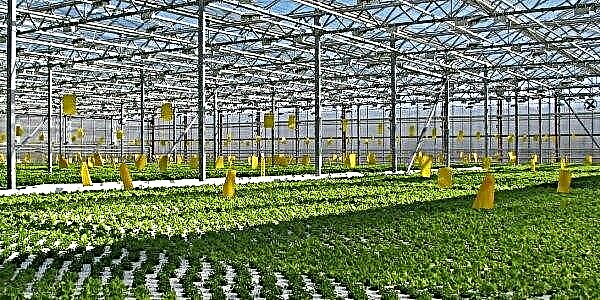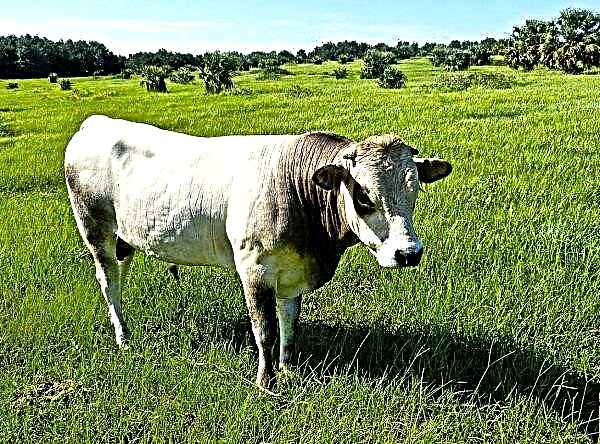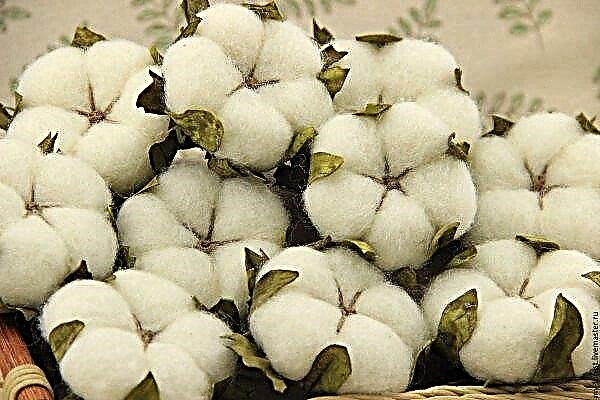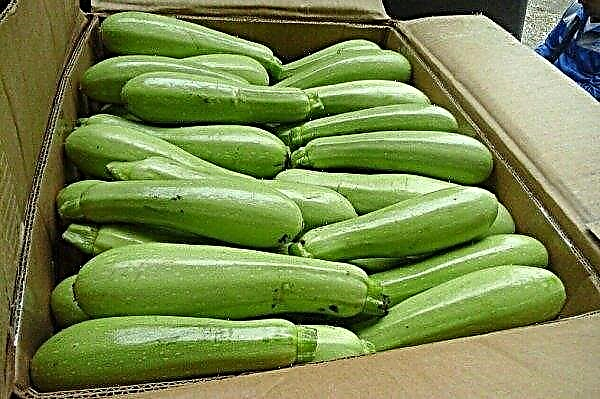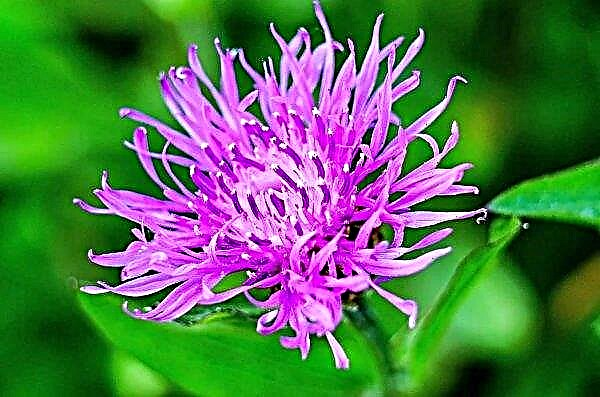For many vegetable growers, eggplant has long ceased to be an “overseas” delicacy. Observing the basic principles and technology of growing this vegetable crop in the greenhouses, using regional breeding varieties, you can get a high yield. How to choose the right variety for greenhouses, collect and preserve vegetables, we will describe in this material.
Important! The temperature regime can be controlled by ventilation, and with dry air, water the aisles or arrange the containers with water.
Features eggplant for greenhouses
High eggplant yields in a greenhouse, where there are no sharp fluctuations in temperature, wind and frost, can be obtained, taking into account the features of this vegetable:
- moisture - a native of the tropics, eggplant loves well-moistened soil and dry air (not higher than 60–70%);
- shine - young seedlings develop better with a short daylight, but in the future requires bright sunlight;
- heat - eggplant is very sensitive to cold, the best temperature for the formation of ovaries and fruit growth is considered to be in the range of +25 ... + 28 ° С;
- top dressing - Fertilizing should be carried out 3-4 times per season.

The best varieties of eggplant for growing in a greenhouse
In order to accurately select eggplant varieties for sowing seeds in a greenhouse, the following factors must be considered:
- productivity;
- ripening time;
- plant growth;
- palatability of fruits (lack of bitterness);
- resistance to diseases.
In addition to the main varieties of eggplant, there are also hybrid ones, which in the classification are indicated by the addition of F1 symbols. The quality of hybrids is enhanced by crossing varieties to reduce the requirements for cultivation conditions.
Did you know? Eggplant contains such an amount of ascorbic acid that it can successfully compete with pharmaceuticals in the prevention of colds.
If until recently varieties for the middle strip, for example, for Moscow Region, and early ripe varieties for the Urals were almost never found, now, thanks to the successful work of breeders and the development of new cultivation methods, there is a rich assortment of varieties and hybrids for growing. For cold regions, such as the Moscow Region, the Urals, Siberia, preference should be given to early ripe and mid-ripening varieties and hybrids. Consider the most popular varieties of eggplant suitable for growing in a greenhouse.
Nutcracker
The nutcracker is a mid-season, high-yielding and unpretentious hybrid with the following characteristics:
- the bush is sprawling, grows up to 2 m and requires garter;
- harvesting can begin on the 100th day after sowing;
- large fruits grow up to 400 g and require support, their color is thick purple, the skin is glossy;
- the inside of the fetus is white, elastic, with a mushroom flavor, has no bitterness;
- well withstands transportation and storage;
- the yield depends on the cultivation conditions, the duration of the turnover and is 5-10 kg / 1 m².

Bagheera
Early ripe hybrid, resistant to disease and undemanding to large areas, which saves space in the greenhouse.
Its characteristics:
- the crop can be harvested 100 days after germination;
- an adult plant has a height of about 120 cm;
- narrow-cylindrical fruits of a deep purple color with a glossy peel weigh 250-300 g;
- the inside of the fruit is white-light green in color, medium elasticity, without bitterness;
- can be collected from one bush up to 3 kg.

Baikal
Unpretentious mid-season hybrid, resistant to many diseases. It will survive even a temporary drought.
It can be described as follows:
- high bushes (1.2 m);
- ripening takes place 100-110 days after germination;
- teardrop-shaped fruits of dark purple, almost black color, weighing 320-370 g;
- the inside is elastic, without bitterness, white and light green in color;
- productivity - 2.8–3.2 kg per bush;
- well withstands transportation and storage.

Joker
High-yielding, requiring careful care early ripe variety with carpal bearing is characterized by the following features:
- matures on the 90th day from sowing;
- adult plant grows to 1 m;
- brushes are formed with 3–6 fruits weighing up to 200 g;
- oval fruits with a dense purple hue;
- the inside is elastic, without bitterness;
- fruiting is high: 50 and even more fruits can be removed from one plant with proper care.

Purple Wonder F1
An early ripe hybrid, which with proper care will provide a good harvest.
Its characteristics:
- the growing season lasts 90–100 days;
- adult plant grows above 1 m;
- fruits of slightly curved shape, with a pointed tip, dark purple in color, with a glossy peel, weigh 100-300 g;
- inside the fruit is greenish, with excellent taste, absolutely without bitterness;
- the absence of thorns on the fruit cup will delight during the harvest;
- the yield is approximately 5 kg from 1 m² or up to 10 fruits from a bush;
- well withstands transportation and storage.

Fabin
Fabina cultivar hybrid with a very early maturation (70 days after germination). Unpretentious and responds well to dressing.
Its characteristics include:
- squat and compact bush, not more than 60 cm;
- the fruit is almost black in the shape of a cylinder, weighs more than 250 g;
- you can get 8-10 fruits from one bush;
- the variety has resistance to verticillic withering and damage by a spider mite.

Black Moon
Resistant to many diseases (including tobacco mosaic) mid-season hybrid is characterized by such properties:
- matures after 125 days from sowing;
- ovaries form well even at low temperatures;
- spherical fruits lengthen with growth;
- the bush grows to 50–70 cm, sprawling and requiring space, but does not need a garter;
- the surface of the fruit is shiny, dark purple;
- the pulp is light, voids and bitterness are absent;
- with careful care, regular watering and observing the light regime, you can get fruits up to 300 g in weight and harvest up to 5 kg / 1 m².

Sophia
Late variety with a growing season of 130-150 days has the following characteristics:
- squat bushes do not require large areas;
- thick pear-shaped fruits of a dark purple hue, large (500-800 g), need to be supported;
- productivity is approximately 6–8 kg per 1 m²;
- the variety easily tolerates low temperatures, but is prone to diseases, which can be avoided by observing the rules of agricultural technology.

Black handsome
Black handsome late variety, resistant to almost all diseases of solanaceous crops.
Its characteristics:
- ripening in 125–130 days from sowing;
- squat bush (up to half a meter) and compact;
- pear-shaped fruits, black-violet color, which explains the name of the variety;
- the mass of one fruit can reach up to 800 g when grown in a greenhouse (in open ground - 300 g);
- the pulp is white, excellent taste, no bitterness;
- productivity is 8–10 kg per 1 m².

Alenka
Mid-season variety: 108 days elapse before the start of technical ripeness.
It is characterized by such features:
- low bushes;
- cylindrical fruits, unusual for eggplant, light green in color with a greenish pulp with a mushroom taste;
- vegetable mass - about 300 g;
- the absence of thorns on the fruit cup, which facilitates harvesting;
- when grown in a greenhouse, the yield is 7.5 kg / 1 m².

Features of growing and caring for eggplant in a greenhouse
Before starting seasonal work, each grower needs to familiarize himself with the key rules for cultivating eggplant in a greenhouse:
- With poor development of shoots, the plants are fed with nitrogen fertilizers.
- If the bushes give a lot of greenery, use potash fertilizers.
- In the absence of flowering and the formation of ovaries, the bushes are sprayed with a solution of boric acid (2 g per 10 liters of warm water).
- With weak root growth, the bushes are fed with magnesium sulfate.
Before top dressing, the bushes must be watered to avoid root burns. In the greenhouse, eggplant bushes need to be tied to trellises or stakes, since plants of certain varieties grow tall and fragile, and an abundance of fruits can damage the stem. But at the same time, one must take into account the photophilousness of the vegetable and not obscure the plantings. Most often, low-growing varieties are grown in greenhouses that do not require bush formation and tying.
Important! With an excess of organic fertilizers, you will get a lot of green mass, but few flowers and fruits.
Observing the temperature regime in the greenhouse, you must remember that the best temperature for the formation of ovaries and fruit growth is considered to be in the range of +25 ... + 28 ° С. Temperature fluctuations, both up and down, can lead to dropping flowers and fruits.
Watering plants produce 1-2 times a week, depending on the weather. During fruiting, it is better to water the plants in the early morning, preferably with warm water, and then carefully loosen the soil, avoiding the crust around the stem, and mulch with a peat-humus mixture in a ratio of 3: 1.
Possible growing problems
Plants in the greenhouse should be inspected regularly to notice the presence of diseases in time and to conduct timely prophylaxis against insect pests. Phytophthora and tobacco mosaic - The most common eggplant diseases in greenhouses. Phytophthora manifests itself on the leaves with brown heels, passing on to the stems and fruits. If timely measures are not taken, the plant will die. The tobacco mosaic virus first stains the leaves in light colors, and then a dark green “mosaic” appears on them. To combat these ailments, Zircon, Fitosporin, and Antracol are used.
Did you know? The Apple of Madness — so the ancient Greeks called eggplant. He who tasted this fruit was thought to lose his mind.
To avoid decay of plants and the appearance of a fungal disease - gray rot - it is necessary in hot days a greenhouse where eggplant is cultivated, ventilate the whole day. This will help to improve ventilation and reduce humidity in the greenhouse.
Colorado potato beetle, spider mite, whitefly, aphids and slugs can cause significant damage to the crop of vegetables. To combat these insect pests, you must use the funds purchased in specialized stores (Fitoverm, Aktellik, Aktara), but do not get carried away with “chemistry” during fruiting. It is better to remove pests manually or to set sticky traps.
Harvesting and storage
The collection of vegetables is carried out when the fruits reach technical maturity, preventing their overriding. The fact is that in overripe eggplants, solanine accumulates - a substance that gives the vegetables a bitter taste. You can’t eat such vegetables. With technical ripeness, vegetables have a characteristic color, size and shape in accordance with the cultivated variety.
Important! Verticillosis is the most fatal fungal disease of solanaceous crops, including eggplant, so try to choose seeds of those varieties that are resistant to this disease.
Ripe eggplant has a glossy surface, it is elastic to the touch, its flesh is without voids with small seeds. In order not to damage tall and fragile stems, vegetables should be cut with a sharp knife, scissors or secateurs. The next cleaning is done in a week, choosing ripened fruits. So that the harvested crop does not lose its nutritional value, it is advisable to immediately process it.
Various methods of storing fruits have corresponding requirements for temperature and humidity:
- vegetables that are stored up to 2 weeks: temperature - +4 ... + 6 ° C, humidity - 90%;
- vegetables that are stored for up to a month: temperature +2 ... + 4 ° С, humidity - 95%.
 Fruits can also be frozen by pre-blanching or frying. For long-term storage, you need to prepare a cool, dark and dry room with good ventilation. Vegetables are placed in boxes or crates, sprinkled with straw, fine sand or ash. You can also store eggplant wrapped in dark paper. Since these vegetables have a natural protective layer on the surface of the peel, it is not recommended to wash them before putting them into storage.
Fruits can also be frozen by pre-blanching or frying. For long-term storage, you need to prepare a cool, dark and dry room with good ventilation. Vegetables are placed in boxes or crates, sprinkled with straw, fine sand or ash. You can also store eggplant wrapped in dark paper. Since these vegetables have a natural protective layer on the surface of the peel, it is not recommended to wash them before putting them into storage.Eggplants do not like dense unfertilized soils, irrigation with cool water, sharp fluctuations in temperature, prolonged cooling. Given all the requirements of such a "capricious" vegetable as eggplant, and providing it with proper care, you can collect a good crop of appetizing and healthy fruits.

